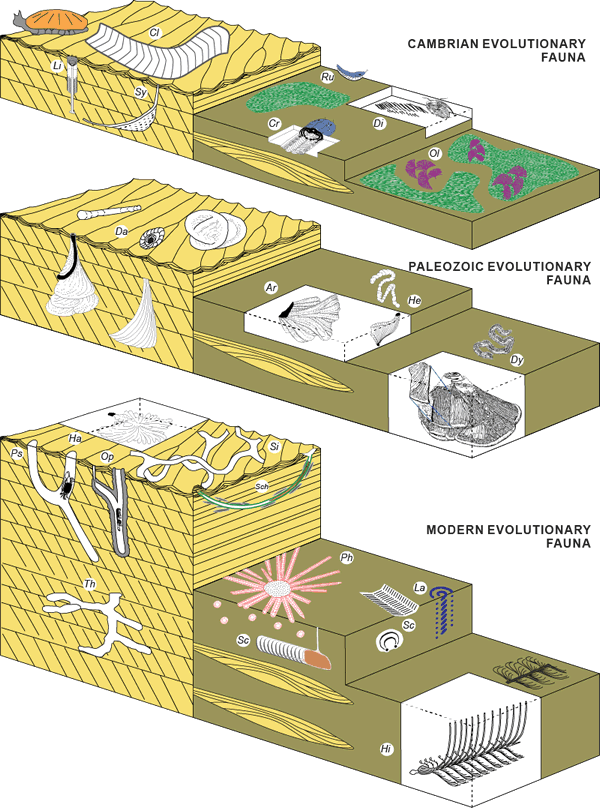
Figure 1.
Ichnologic equivalents of Sepkoski’s evolutionary faunas. Representative elements of the Cambrian evolutionary fauna include trilobite trace fossils, such as Rusophycus (Ru), Cruziana (Cr) and Dimorphichnus (Di), and the inarticulate brachiopod burrow Lingulichnus (Li). Trace fossils of worm-like organisms include Syringomorpha (Sy) and Oldhamia (Ol), whereas Climactichnites (Cl) has been attributed to mollusk-like producers. Examples of the Paleozoic evolutionary fauna include ichnotaxa produced by worm-like animals, such as Daedalus (Da), Arthrophycus (Ar), Heimdallia (He), and Dictyodora (Dy). The Modern evolutionary fauna is dominated by crustacean burrows, such as Psilonichnus (Ps), Ophiomorpha (Op), Thalassinoides (Th), and Sinusichnus (Si), as well as bivalves, suchas Hillichnus (Hi), and irregular echinoids, such as Scolicia (Sc). Structures produced by worm-like organisms include Lapispira (La), Schaubcylindrichnus (Sch), Phoebichnus (Ph), and Haentzschelinia (Ha). For bibliographic sources, see supplementary material in the GSA Data Repository (see text footnote 1).